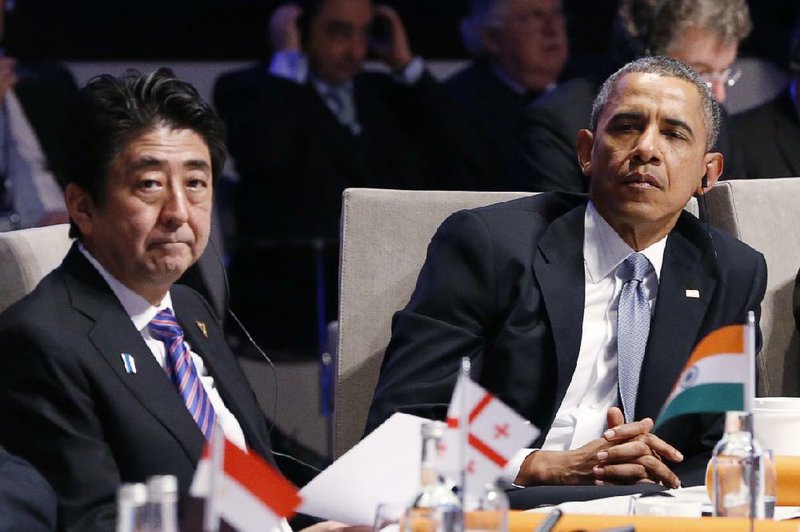THE HAGUE, Netherlands - A major international summit to rein in the threat of nuclear terrorism opened Monday with Japan pledging to return to the United States more than 700 pounds of weapons-grade plutonium and a supply of highly enriched uranium.
The Nuclear Security Summit is the third in a series of meetings established after a landmark 2009 speech by President Barack Obama in which he said unsecured nuclear material presents “the most immediate and extreme threat to global security.”
American and Japanese officials announced the deal - the meeting’s first important breakthrough - at the two-day summit in The Hague.
“This is a very significant nuclear security pledge and activity,” U.S. Energy Secretary Ernest Moniz told reporters. “The material will be transferred to the United States for transformation into proliferation-resistant forms.”
Japan originally received the material from the U.S. and Britain in the 1960s for use in research.
The summit focuses not on nuclear weapons but on efforts to reduce and secure nuclear material stockpiles to prevent them falling into the hands of terrorists who could potentially use them to fashion a weapon.
“All our discussions today and tomorrow will focus on one question: how to prevent nuclear terrorism,” Dutch Prime Minister Mark Rutte said as he opened the meeting.
The number of countries possessing such stockpiles has fallen from 39 in 2009 to 25 at the start of the Hague summit.
The summit, which hosts leaders and senior officials from 53 countries, is expected to wrap up today with a commitment to enact further overhauls to boost nuclear security before a final summit in Washington in 2016.
Obama flew into the Netherlands on Monday morning and was attending a hastily arranged G-7 summit later in the day to discuss the West’s response to Russia’s annexation of Crimea.
The White House also said, in addition to the Japan deal, that the United States had reached agreements with Belgium and Italy to remove highly enriched uranium and plutonium from those European allies.
The White House said it had removed a “significant amount” of nuclear material from Belgium and about 44 pounds from Italy. It did not elaborate.
“Italy and the United States plan to continue to work together to eliminate additional stocks of special nuclear material to make sure they do not fall into the hands of terrorists,” the Obama administration said in a statement.
Yosuke Isozaki, a senior national security adviser to Japanese Prime Minister Shinzo Abe, said handing over the highly enriched uranium and plutonium was part of Japan’s efforts to prevent proliferation.
“Japan shares a vision of a world without nuclear weapons,” he said through a translator.
As part of the deal, the U.S. will continue to receive spent reactor fuel from Japanese nuclear plants for an additional 10 years.
Miles Pomper, a nuclear expert at the Monterey Institute of International Studies, called the return of the materials “a step in the right direction.”
In addition to the weapons-grade material Japan is giving back, it maintains a stockpile of 9.3 tons of lesser-grade plutonium that could be easily weaponized by a country of Japan’s sophistication. That material also could present an attractive target for terrorists.
Additionally, Japan’s new Rokkasho nuclear plant, due to come on line this year, is capable of producing almost that many more tons of plutonium per year when operational. Yet, with most of Japan’s nuclear plants still shut down in the wake of the 2011 Fukushima nuclear plant disaster, there is no apparent use for that material.
“So this is a step forward, but it’s not enough,” Pomper said.
Front Section, Pages 6 on 03/25/2014

